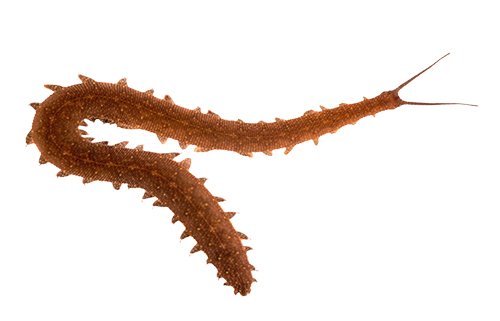Sublime Slime
For some creatures, slime is an all-purpose tool for survival.
It’s not a stretch to say that slime is pretty awesome. On second thought, maybe it is a stretch—a slimy, messy, beautiful stretch. After all, this ooey gooey substance oozes out of creatures big and small. From the ocean to the Outback, the world is a slimy place.
Now, don’t let all that mess gross you out. Sure, we live in a fallen world with all kinds of nasty things that weren’t part of God’s original very good creation (Genesis 1). Where animals once had nothing to worry about, now they’re hunted and harassed and hungry. And that’s exactly where slime comes in.
God gave a breathtaking variety of features to the original animal and plant kinds, and that variety now helps them survive on a cursed earth. Sometimes that survival looks, well, slimy. Slime gives some creatures smooth moves and others slippery armor. Some creatures even shoot slime to catch food. The goopy mess helps them all withstand some sticky situations.
For these animals, “you slimeball” is actually a compliment! Guess you could say that, really, slime is snot so bad after all.
Slip-Sliding Around

Snail
When it comes to slime, you’re probably most familiar with the type that shows up in your garden or on your sidewalk. You walk out in the morning and see silvery trails glistening on the leaves of your rose bushes or fruit trees. You’ve been slimed by the slow maneuvering of a munching snail.
They may be agricultural pests, but snails and slugs are legends of locomotion. Their one long foot secretes adhesive mucous that’s thixotropic, a fancy word that means the slime liquefies when the animal contracts a section of its foot. (It’s sort of like how squishing a ketchup packet helps it flow more easily.)
But perhaps no creature masters slime movement like the aptly named slime mold. For the most part, slime molds are organisms that live the single-celled bachelor life. But if food is scarce, they can join together and start moving as a single body. Once joined, slime molds send out feeler-like pseudopods (fake feet) that help them navigate even complicated mazes to find food. As they explore, they leave trails of slime to keep track of where they’ve already searched. Now that’s real GPS—global positioning slime.
God’s gift of slime doesn’t stop with movement, though. He also made sure some creatures could enjoy plenty of oozy hors d’oeuvres.
Slimy Snacks
Dangling, glowing slime—mmm, doesn’t that sound delicious? OK, pobably not to you. But a mosquito or a midge (a small fly) finds the iridescence irresistible. That works out great for the cave glow worm, the larvae of New Zealand gnats. These worms build silk nests on cave ceilings and let down up to 30 threads with sticky slime on them. Then their bodies’ bioluminescence goes to work, and curious bugs buzz in to investigate before being snagged by the gluey goo.
Parchment worms use a similar trick down where they live in the dark depths of the ocean. They create mucous nets to capture plankton and then suck their catch into the tubes where they live. They also use a little slimy sparkle to stay safe. If a predator gets too close to their tubes, the worms release a cloud of glowing mucous that sticks to the would-be predator and makes them a shimmering target in the dark.

Velvet Worm
But if you’re looking for a real slime master, look no further than the velvet worm. This animal looks like a simple, many-legged worm, but don’t be fooled by its nondescript exterior. God loaded it with incredible features—quite literally. When a velvet worm is looking for a meal, it can spray slime from two syringe-like “cannons” on its head. Oscillating at a speed of up to 20 feet per second (5 m/s), the streams cross in midair and weave a slimy net to capture food. The velvet worm then eats the prey, net and all!
But slime isn’t just on the offense—it also plays defense for some creatures. God gave many animals a slimy way to stay safe in a wild world.
Staying Alive
Sea creatures in general can be pretty slimy. But a few slippery swimmers take their slime to the max in order to stay alive. Take the daisy parrotfish, for example. When these fish turn in for the night, they secrete a mucous sack from their gills that wraps them up like a cocoon. (Basically, they sleep in their snot.) That sounds a bit “bleh,” but the sack actually protects the fish from parasites while they snooze.
Lungfish also get in on the sleepy-time slime. These fish are so named because most species don’t use gills to breathe, and that works great for living in places where the water is shallow and can dry up, such as west Africa. But lungfish living there have got it covered—with slime, of course. When the water vanishes, they wrap up in a coat of mucous and sleep until the rains come again.

Hagfish
Slime can also protect animals in other ways. For example, vampire squid eject mucous with glowing orbs to distract predators, and some species of octopus can use slime and ink to create pseudomorphs (a fake octopus-like shape) that give them cover to slip away. Also, New Zealand earthworms secrete an orangey bioluminescent slime that deters plenty a hungry animal.
But if there were a slime crown, it would go to the hagfish. These eel-like fish have around 100 mucous glands running along their sides. And, boy, can they use them! They turn the water around them—about 5 1/4 gallons worth (20 L)— into a substance similar to gelatin. A would-be gilled predator can’t breathe in all that sludge and has no choice but to swim away.
Answers Magazine
July–September 2021
Recommended Resources

Answers in Genesis is an apologetics ministry, dedicated to helping Christians defend their faith and proclaim the good news of Jesus Christ.
- Customer Service 800.778.3390
- © 2024 Answers in Genesis





